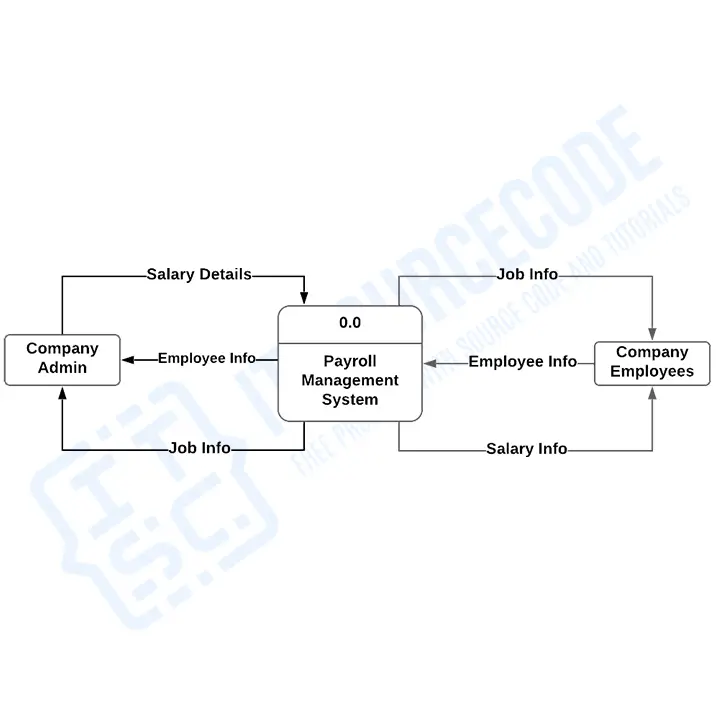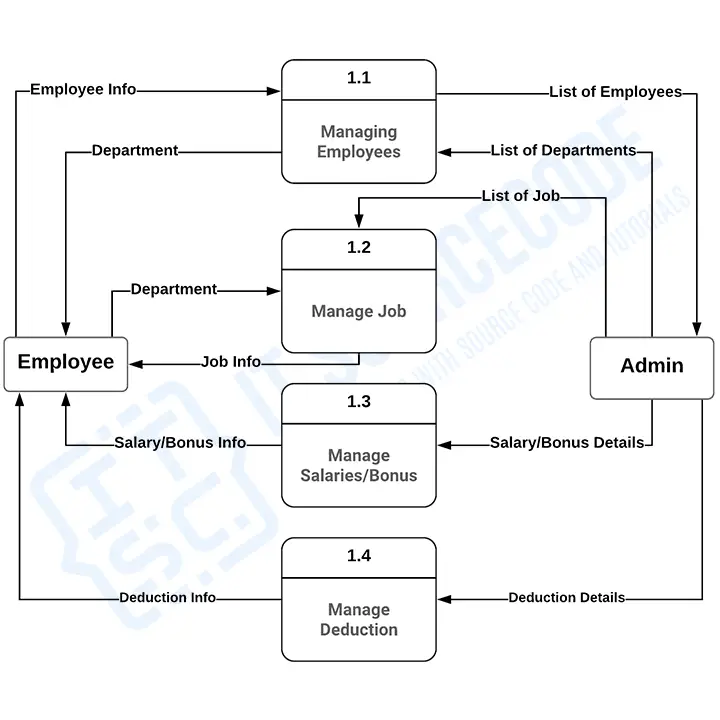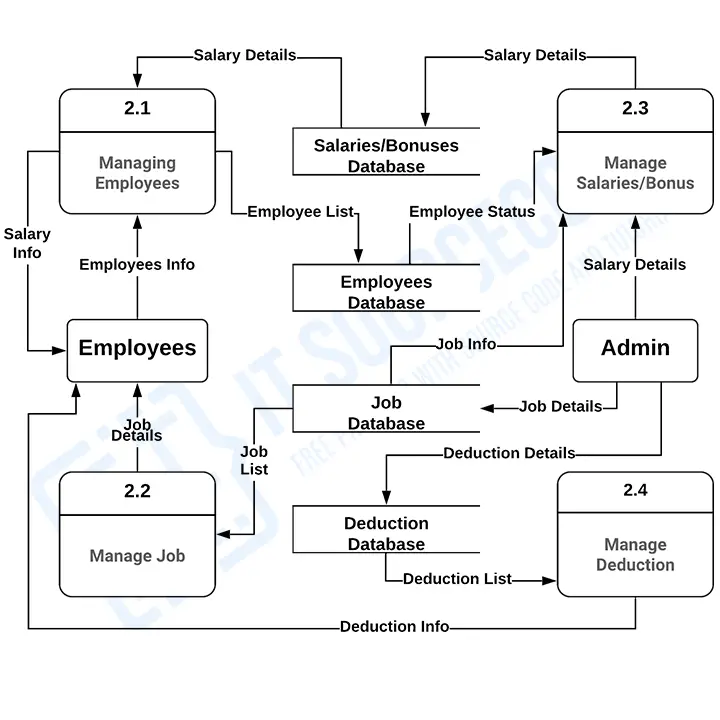A data flow diagram (DFD) shows how data moves through the payroll system with the help of inputs and outputs.
The following symbols show the presence of the payroll management system data flow diagram (DFD) levels.

Data Flow: The data that flows between external entities, processes, and data stores is known as data flow. It depicts the connection between the other components. In addition, a labeled arrow is used to indicate the flow of data.
Data Store: The data store is the project’s database or backbone. It stores all of the data inputs and secures them until later use.
External Entity: External entities are the source and target of the system’s information and interact with it. Users identify entities using the terms “terminators,” “sources,” “links,” and “actors.
Process: The DFD process component modifies data and generates output. In addition, it does calculations, sorts data based on logic, and regulates data flow by project specifications.
0 Level DFD for Payroll System
The payroll management system’s level 0 DFD is often referred to as a context diagram.
This level illustrates the project’s whole concept in a single scenario. Therefore, you will understand the primary function of a payroll management system simply by reviewing this level.

The context diagram example highlights payroll management as the primary process.
External entities (users) will give inputs to activate the main function. Its external parties were the company admin and the company employees.
The data flow then begins as soon as the input is present. The subsequent graphics will elaborate on the context diagram of the payroll system.
1st Level DFD – Payroll Management System
The first level of the data flow diagram (DFD) places greater emphasis on the notion of a context diagram. This is the high-level version of the previous diagram.

This example illustrates the payroll management sub-processes. These sub-processes constitute the essential development functions of the system.
Here are the sub-processes of the Payroll Management System:
- Managing Employees
- Manage Jobs
- Manage Salaries or Bonus
- Manage Deductions
These processes tell the system how data can flow into and out of the system.
Take Note: The system’s data inputs, outputs, and sub-processes are based on the fundamental concept of payroll management. Each of these can be altered based on the requirements of the project.
In certain projects, DFD levels 0 and 1 are sufficient to describe the system’s functionality. If your project requires additional explanation or emphasis, you may include the payroll DFD level 2.
2nd Level DFD – Payroll Management System
Level 2 is the most abstract of the data flow diagram abstraction levels. The DFD level 1 focuses more on the sub-processes than on the primary process.
This level provides a concise explanation of the particular subprocess.
However, the example diagram below lacks a detailed description of a subprocess. Instead, it emphasizes the system’s databases via a data store. The Payroll Management System ER Diagram contains information on the database.

In this example, the databases of the payroll management system are as follows:
- Salaries/Bonuses Database
- Employees Database
- Job Database
- Deduction Database
Each of these databases (data stores) becomes a place to store data that comes in and out of the system.
Take Note
The payroll system DFD level 2 could be in multiple diagrams, depending on how many sub-processes you need to describe.
The examples provided reflect a general perspective of the payroll management system. Its concepts can be adapted or traded to match the needs of your project.
Payroll Management System Data Flow Diagram Pdf
You may download the Data Flow Diagram for Payroll Management System PDF by clicking the button below. It has the full details and discussion of the Payroll DFD (Data Flow Diagram).
You can also modify its content to complete your project requirements and needs.
Conclusion
The DFD (data flow diagram) for the payroll management system project is the description of data processing. Each level was described and talked about to help people understand what levels 0, 1, and 2 of DFD do.


thank you about your work please send the project full document by email
Thank you for your appreciation, we have provided a PDF file about the DFD documentation, you can download it for free.